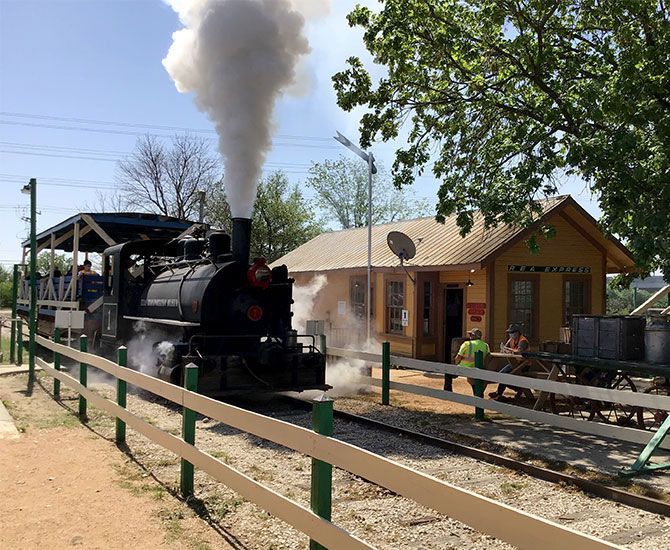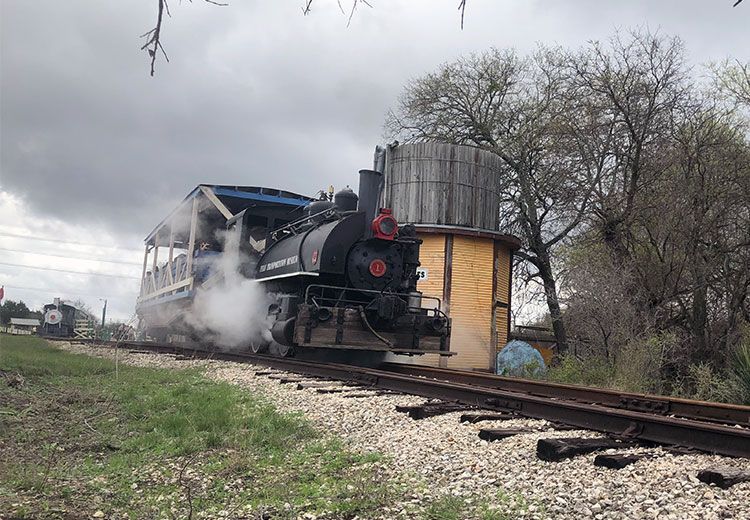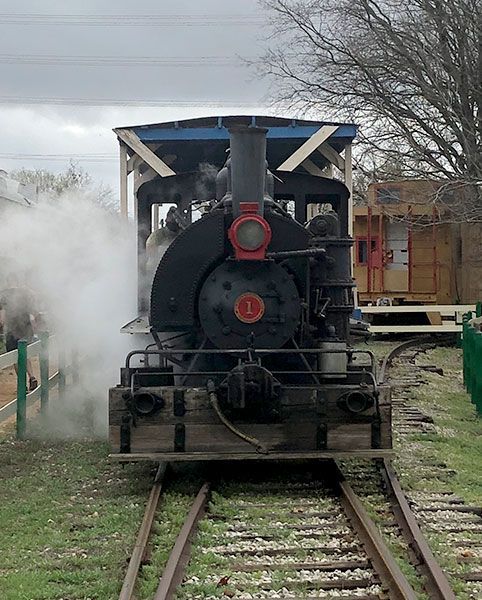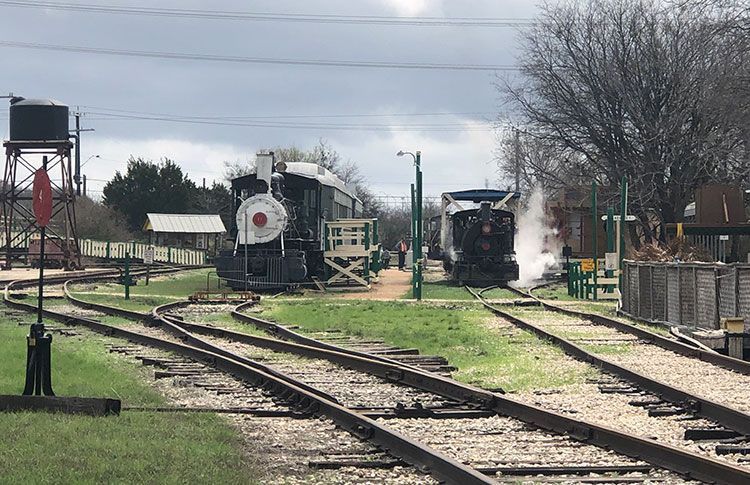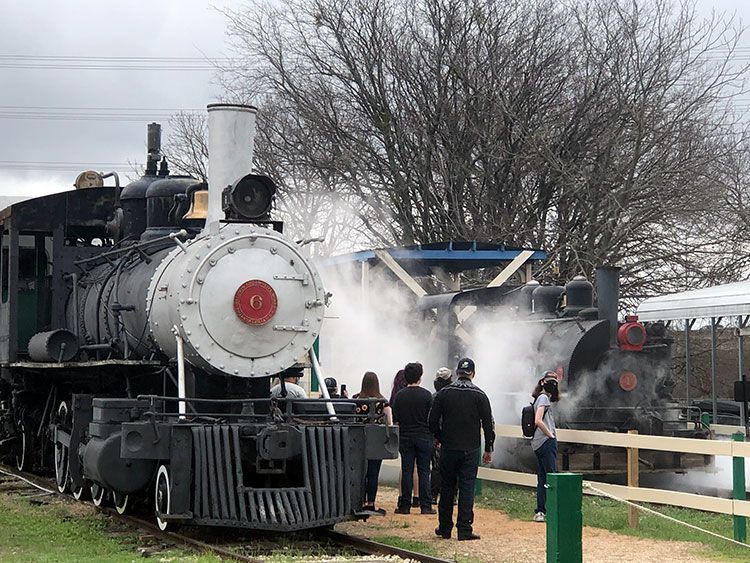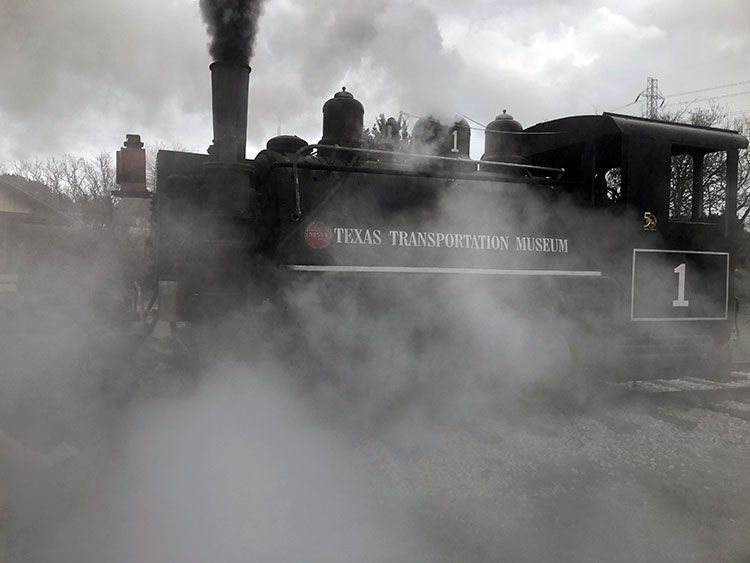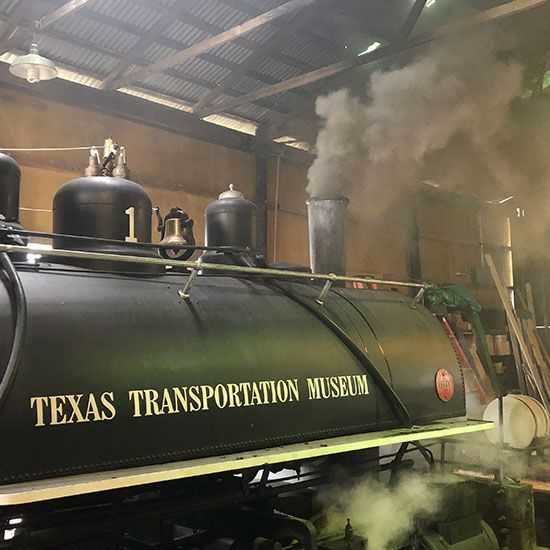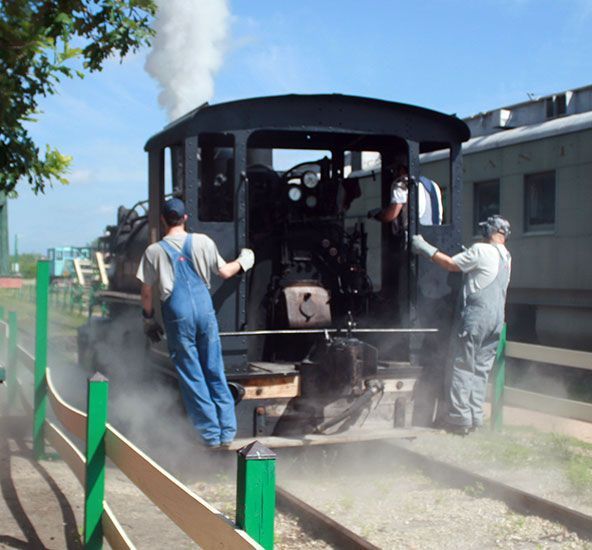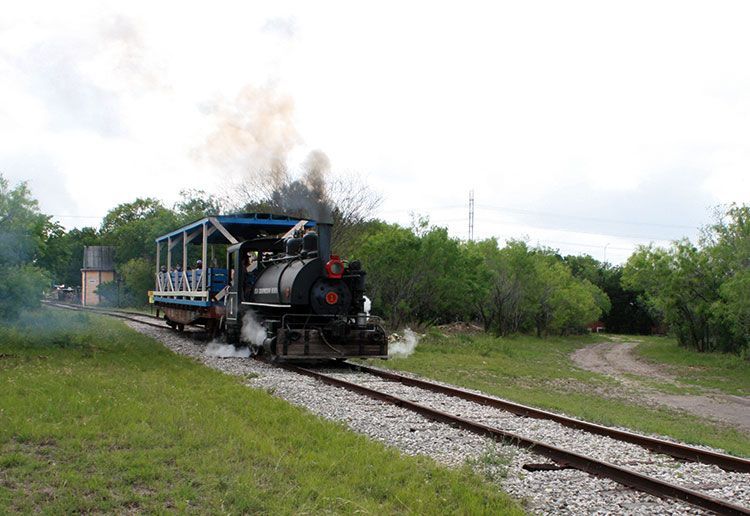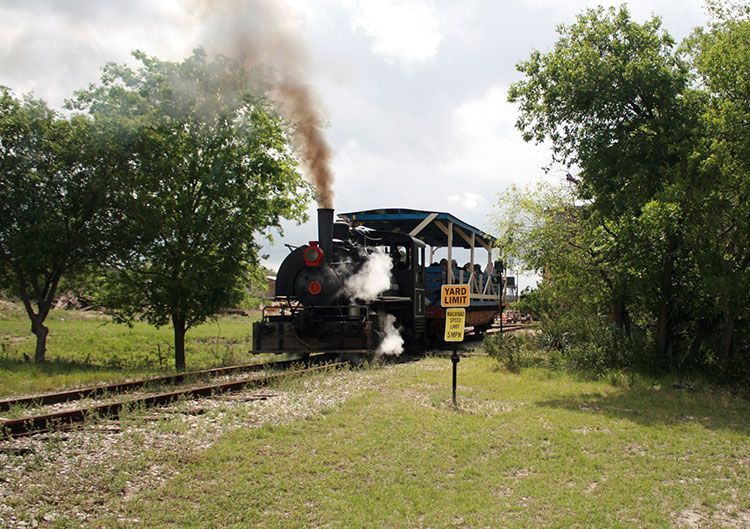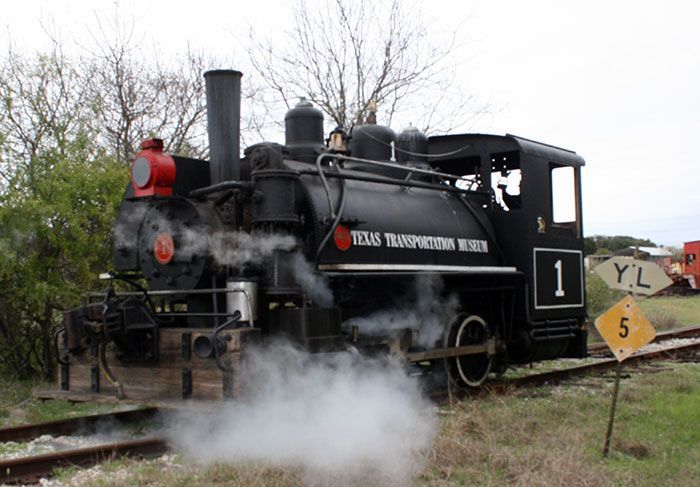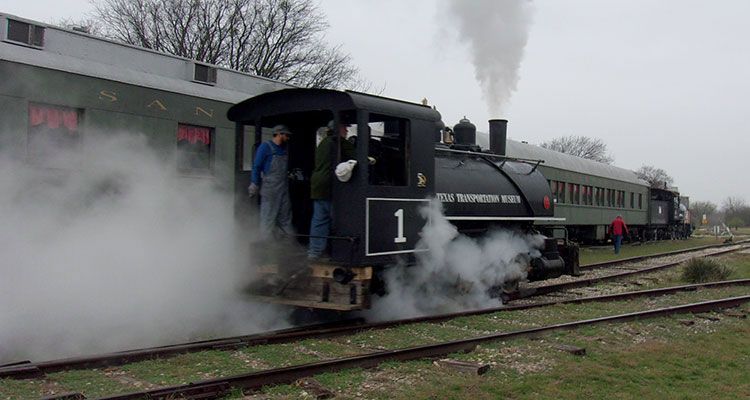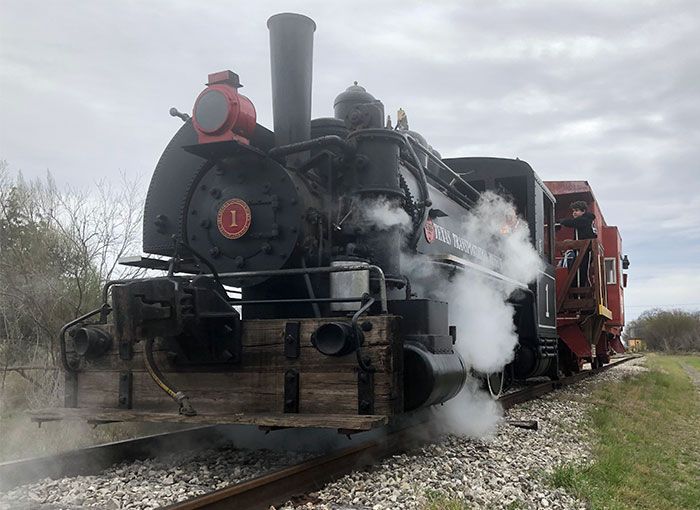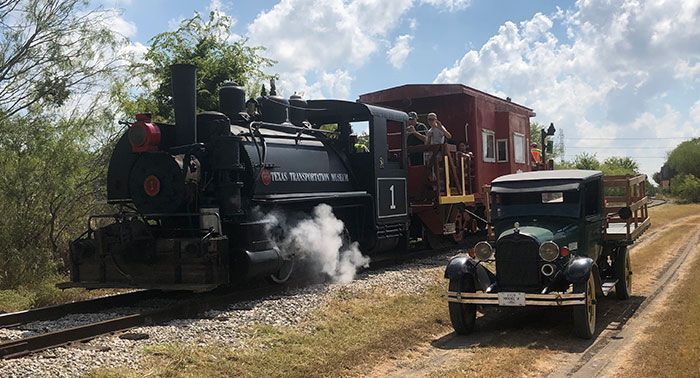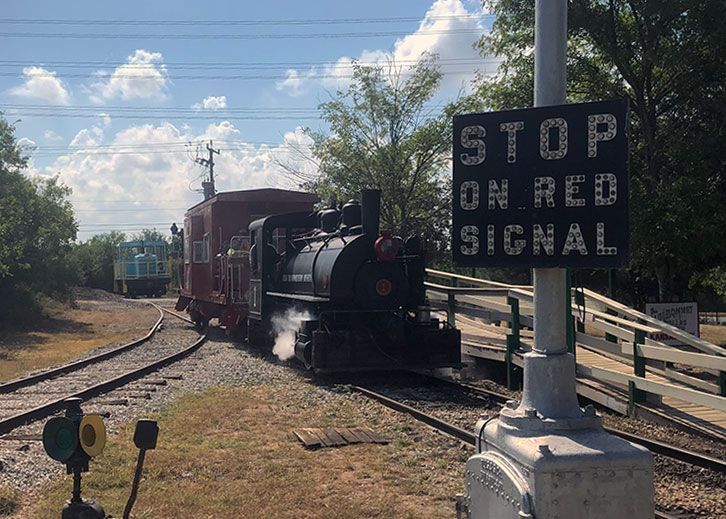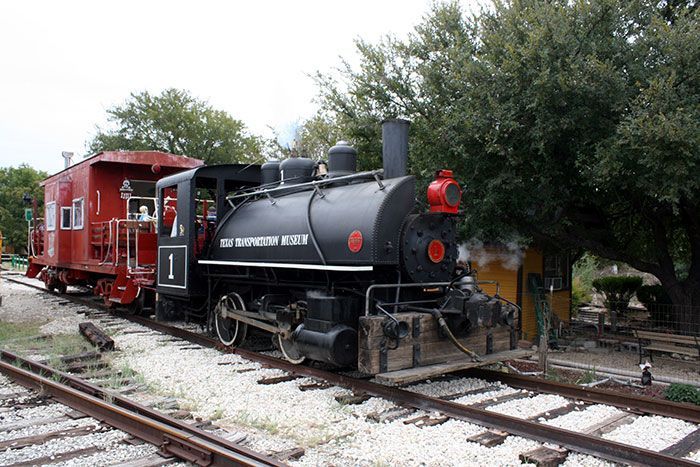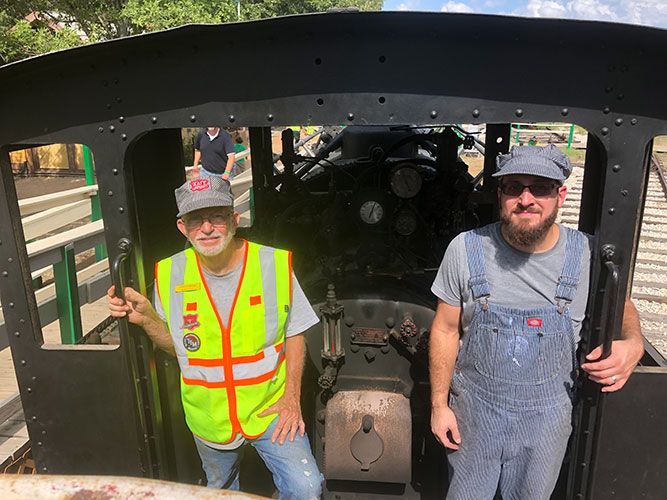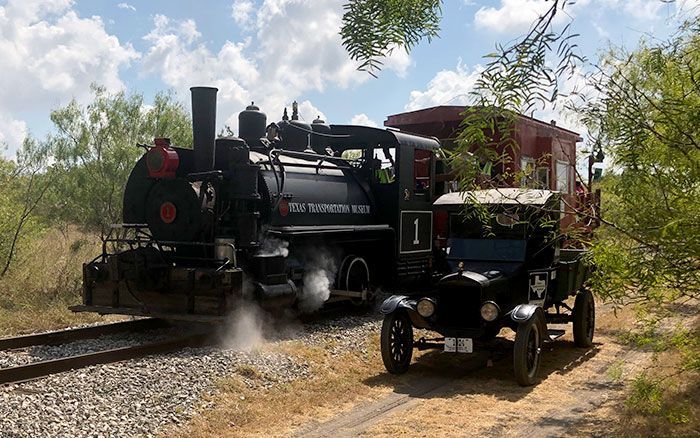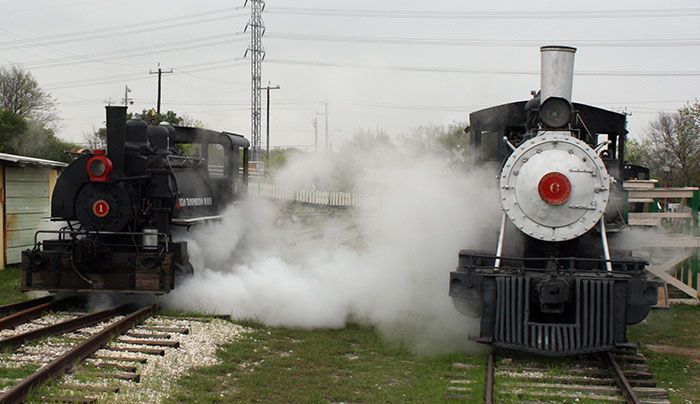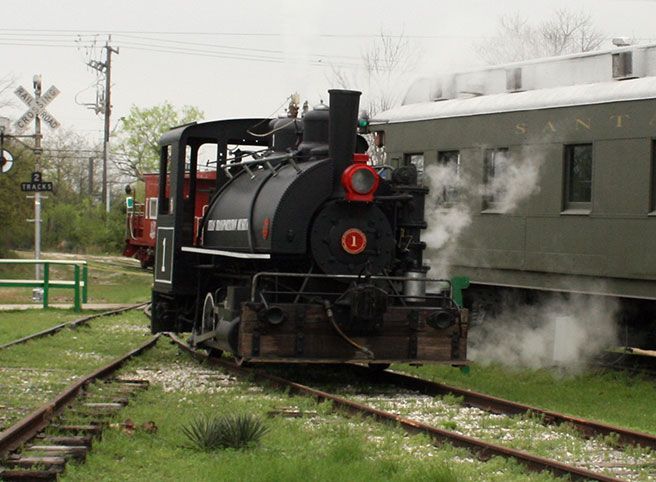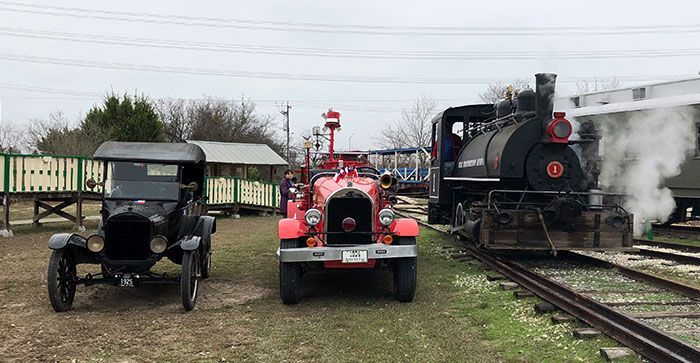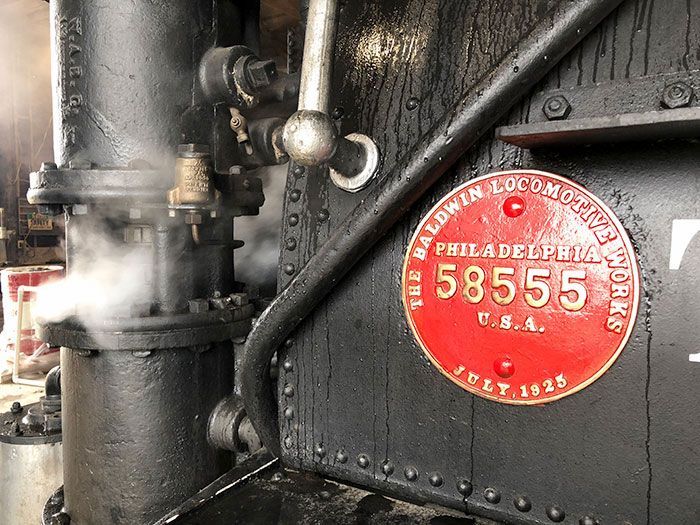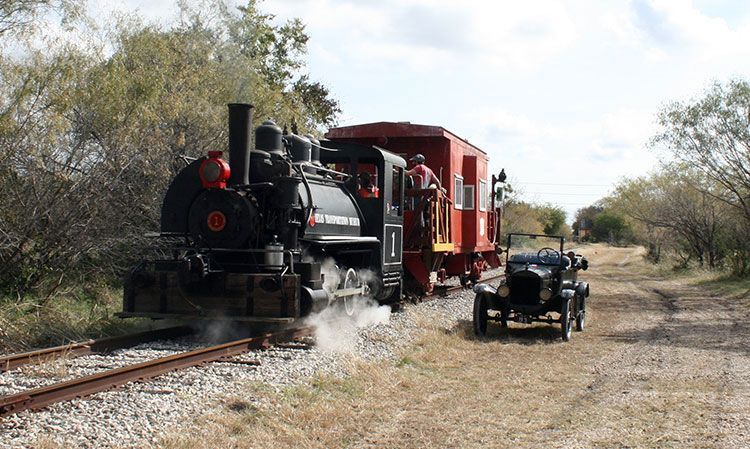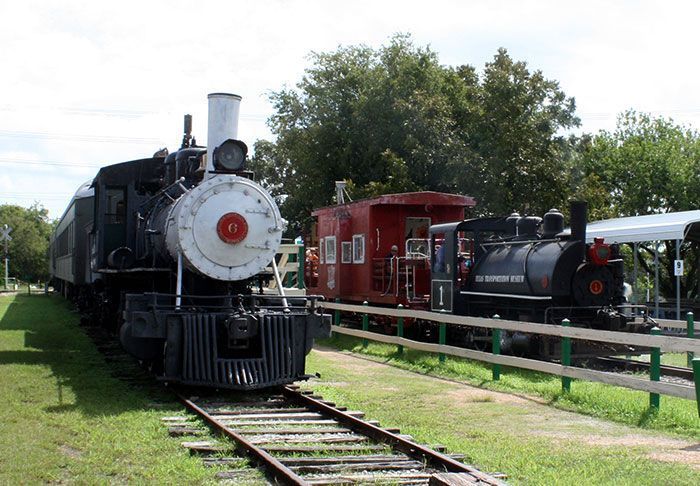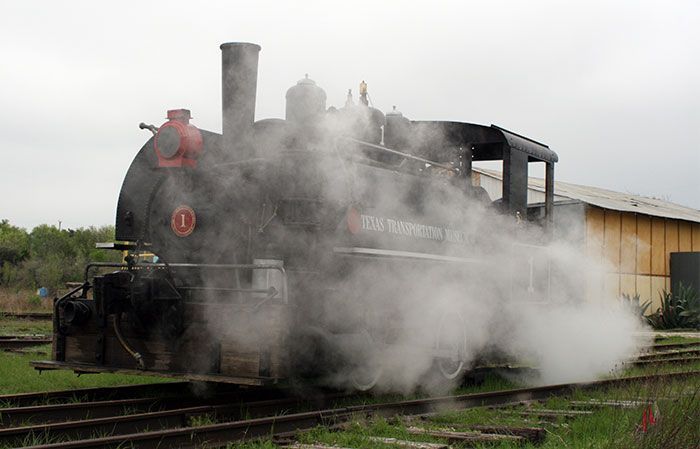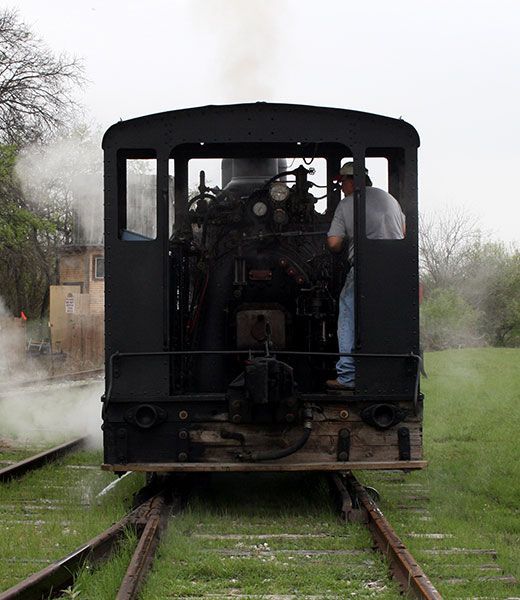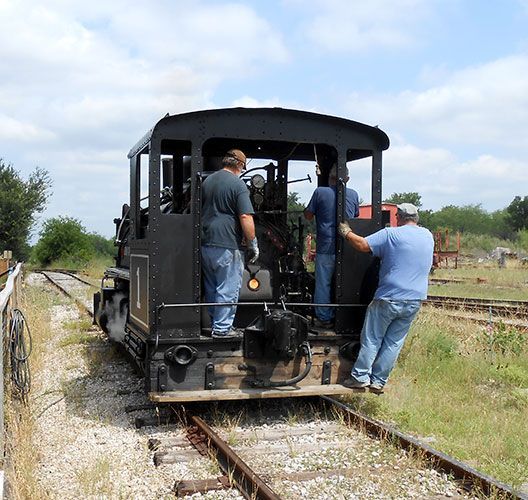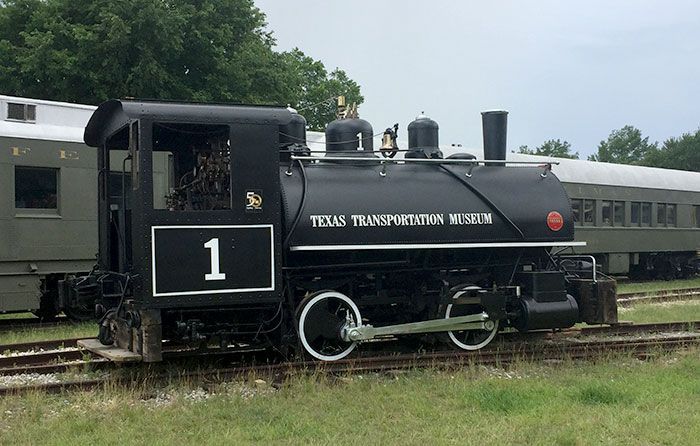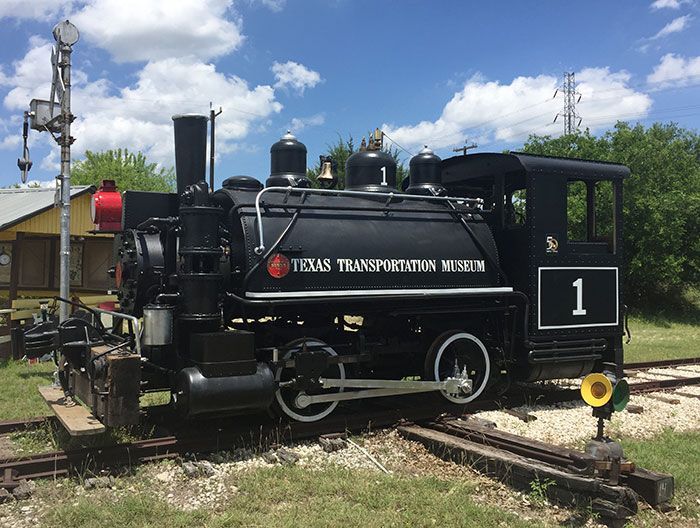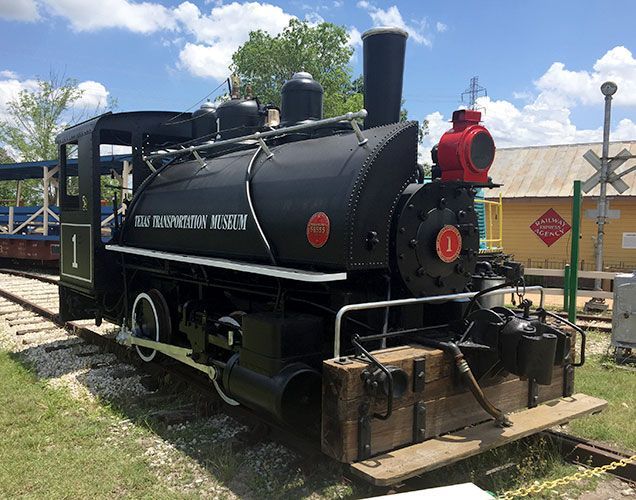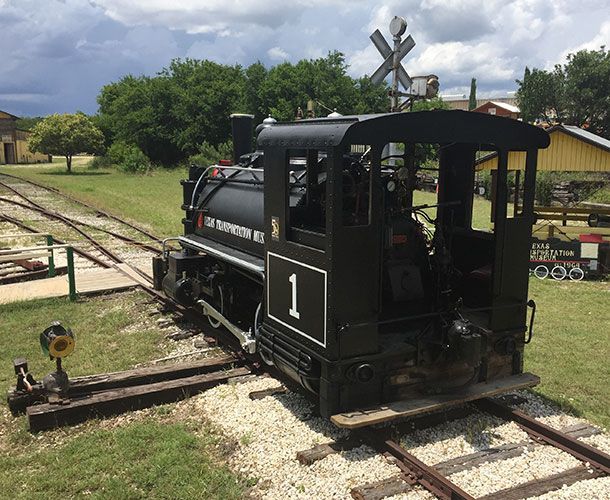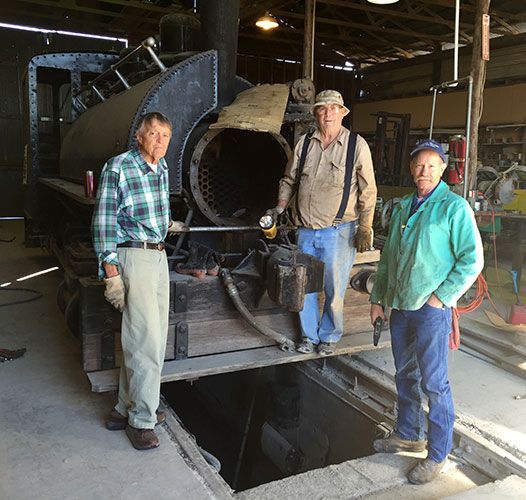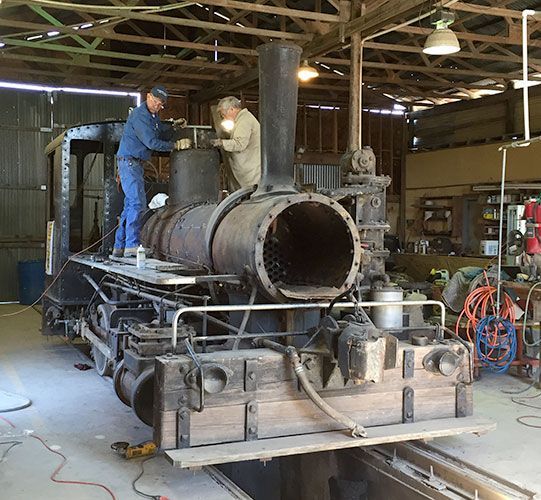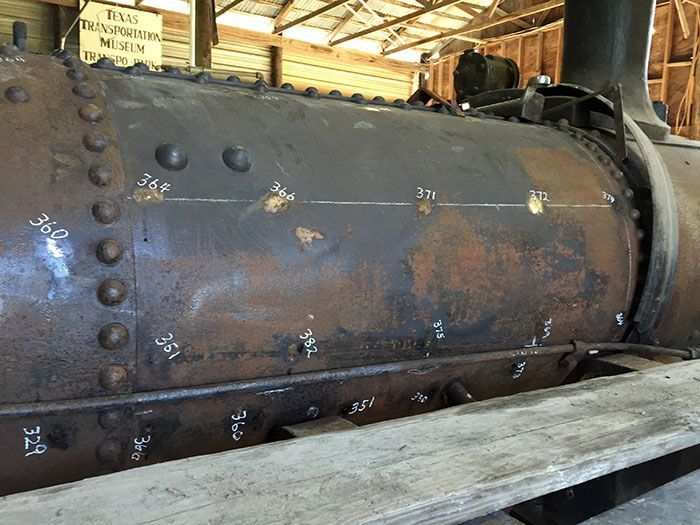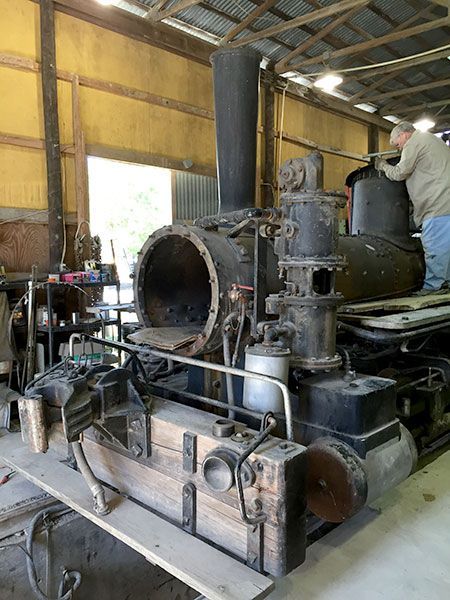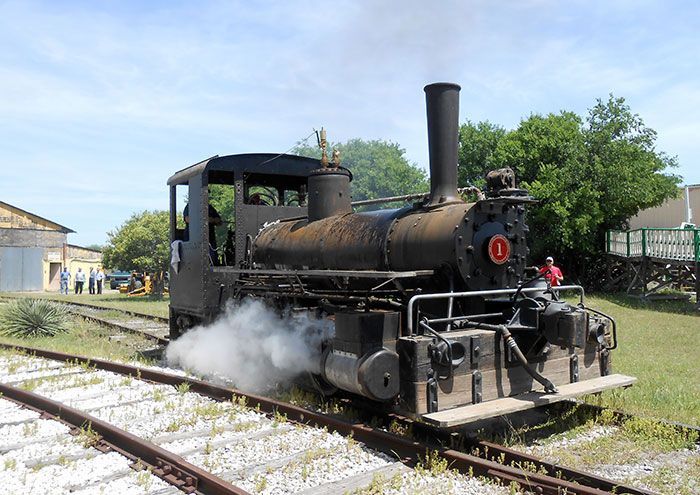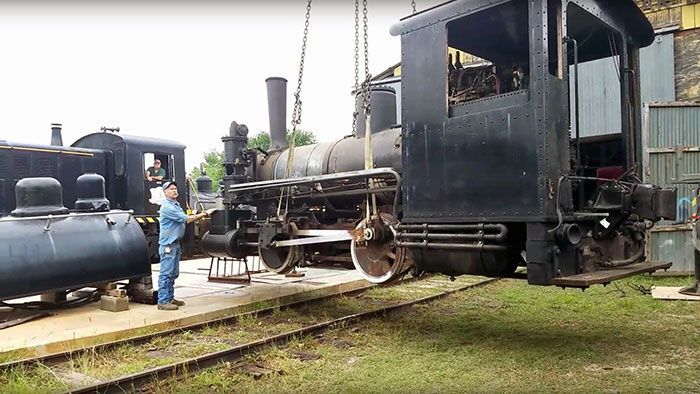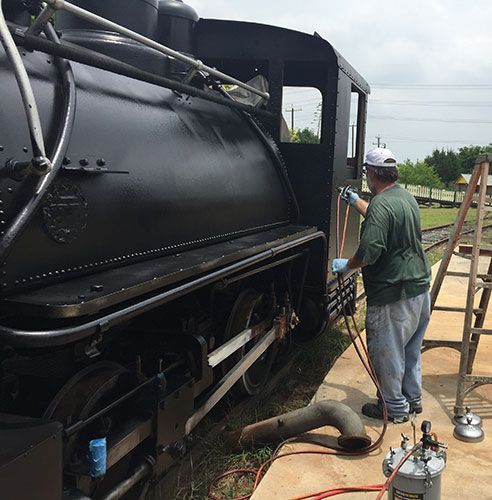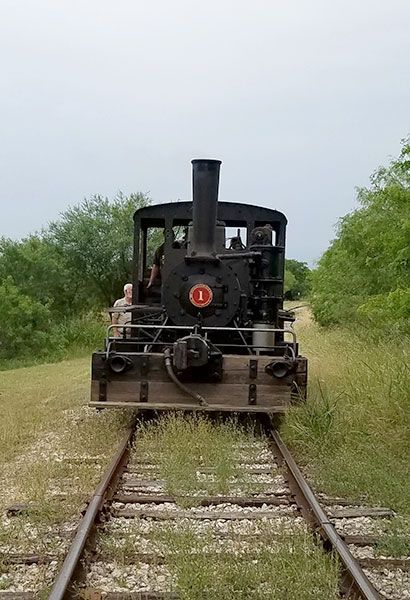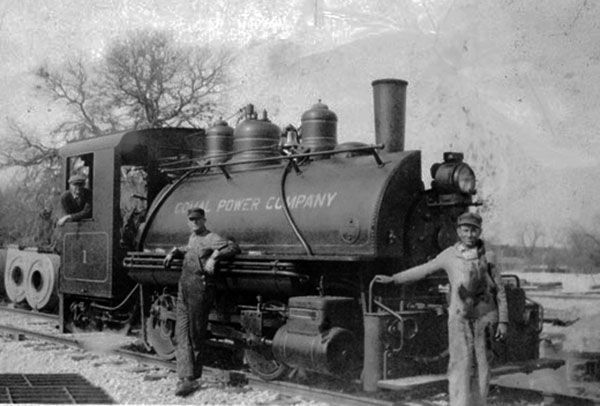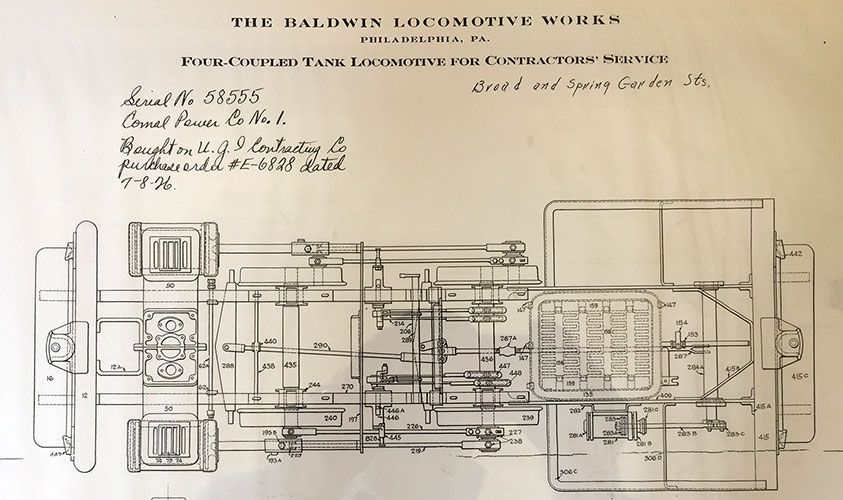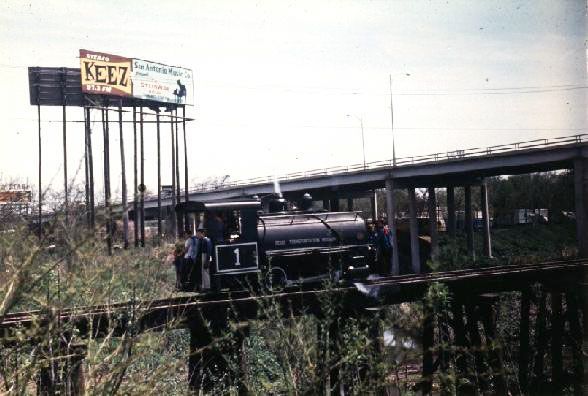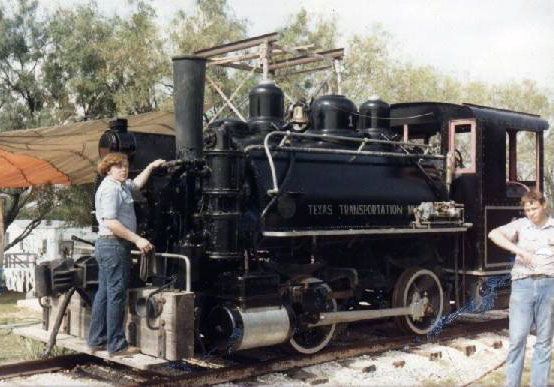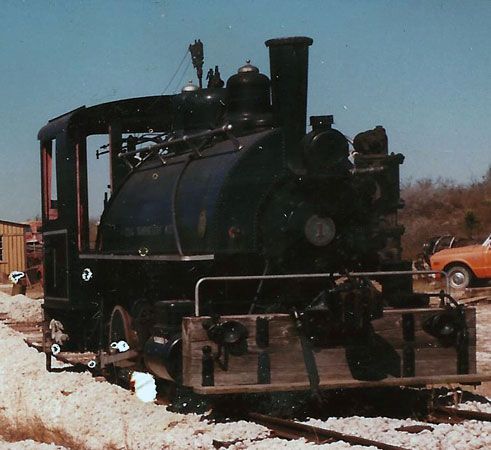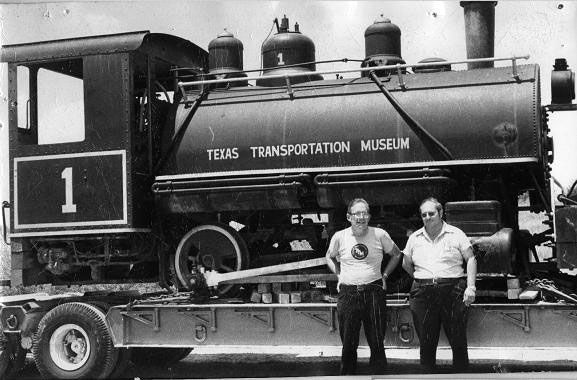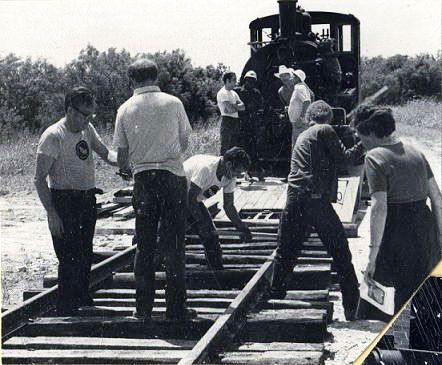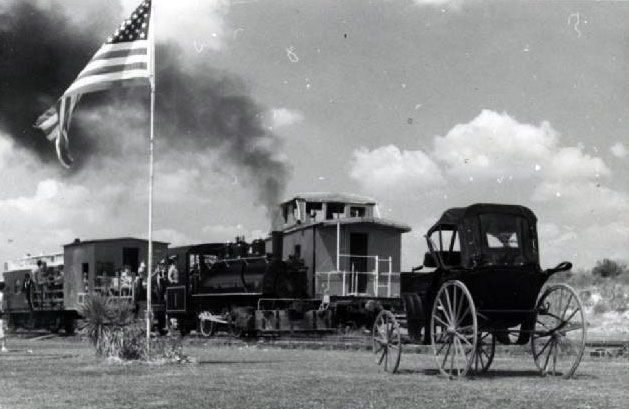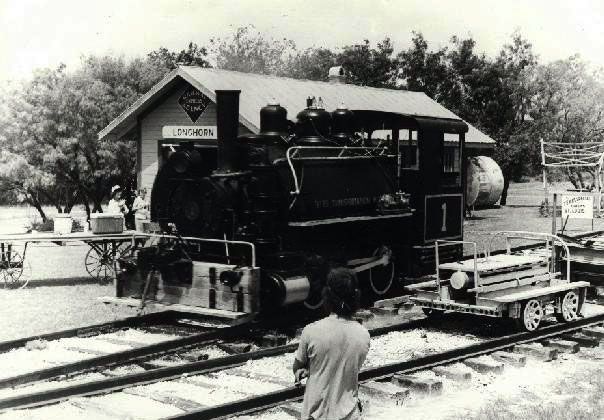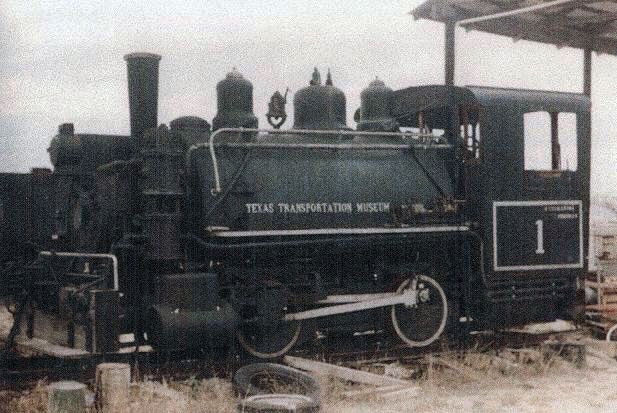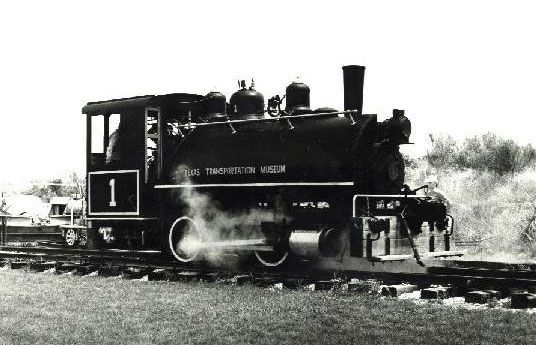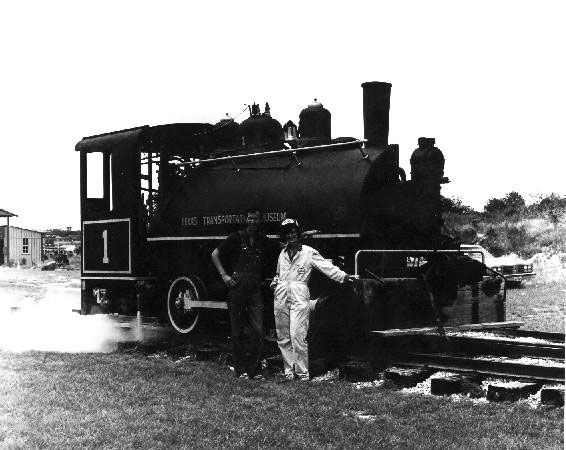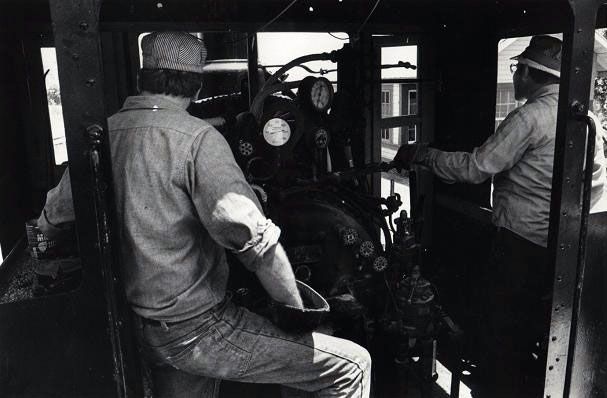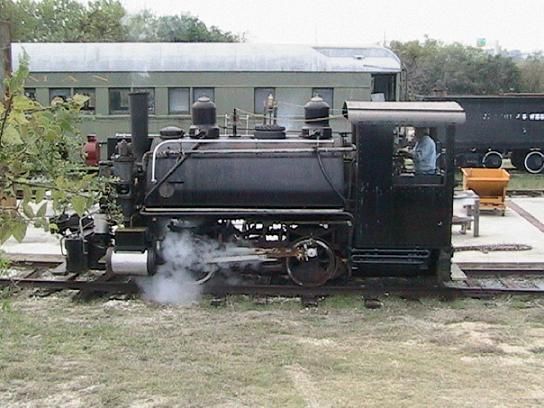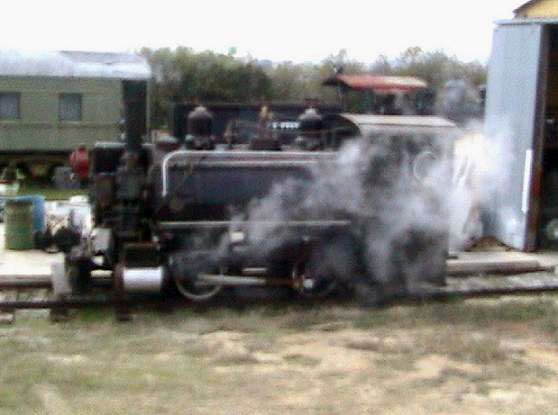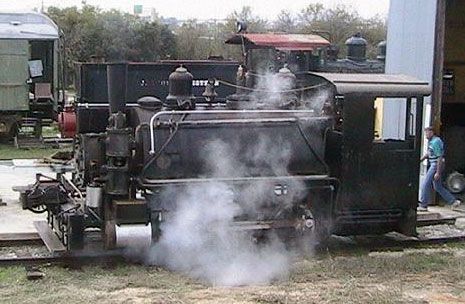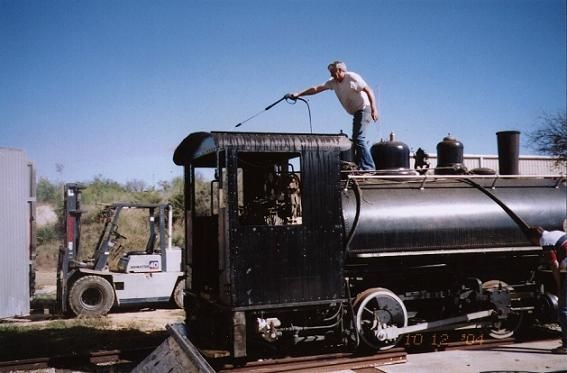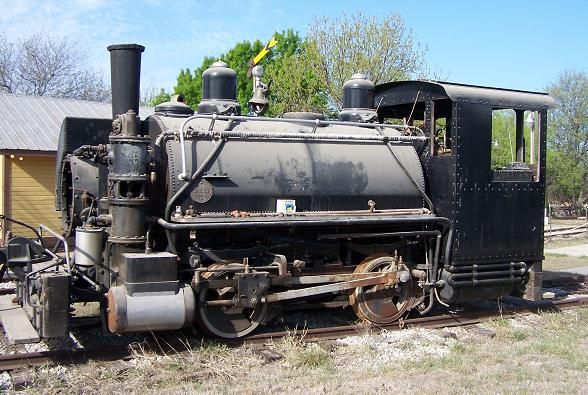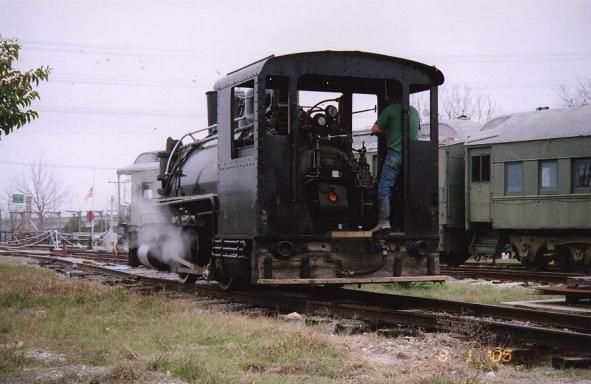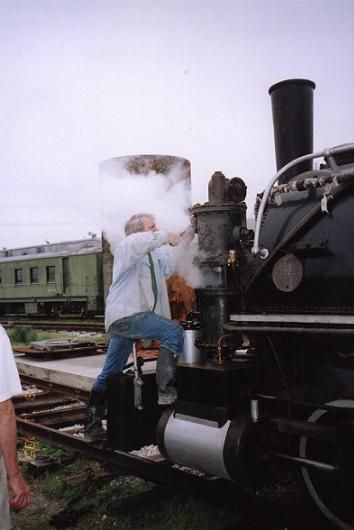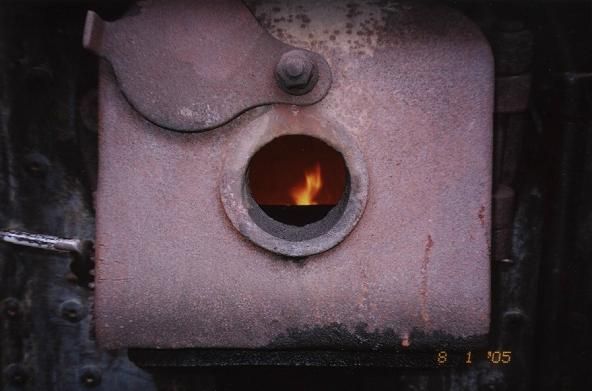1925 Baldwin 0-4-0 Steam Locomotive "#1"

Technical Specifications
#1 was built in 1925 by Baldwin for the Lower Colorado River Authority who used it to deliver and empty one coal car at a time at the New Braunfels electricty power station.
Builder's plate number - 58555
Built as an oil burner
Operating weight - 47,000 lbs
0-4-0 wheel arrangement, with 30 inch wheels.
The boiler is 32" in diameter, with 73 1.75 inch diameter, 9 foot 2.25 inch long, tubes
#1 has 9,875 lbs of tractive effort
It holds 700 gallons of water and 120 gallons of fuel
Last operated by LCRA in the late 1920s
Acquired by TTM in 1964
Videos
Texas Transportation Museum wishes to thank
The Brown Foundation
and
The Flohr Family Foundation
for their generous contributions towards the restoration and
return to service of #1, our 1925 Baldwin 0-4-0 steam locomotive.
We are also indebted to many voluneteers over the years, most recently:
Bob Owers, Dave Wallace, Larry Black, Dave Cenova,
Bill Reynolds and Jared Cavaliere.
#1 is a very small 0-4-0 steam locomotive. It was purpose built for the Comal Power Company by Baldwin in 1925 to move one coal car at a time into its electricity generating plant by the river in New Braunfels. It had to be small to be able to navigate the extremely limited space. The tracks to the power plant had very tight curves. It was they who called it #1, as can be seen on the factory photographs inclued lower on this page. The small steam engine has an oversized steam compressor to provide enough power to tip and empty the coal cars into the plant's fuel hopper. The locomotive's working life was remarkably brief; the plant was converted to oil power in 1927. Instead of being sold or scrapped, #1 was mothballed. It was "rediscovered" by San Antonio rail enthusiasts in the the early 1960s. The Texas Transportation Museum was formed in order for them to be able to acquire it, as the utility was only allowed to give it away to a registered non-profit. After a short return to service on the tracks at the Pearl Brewery in San Antonio, #1 was moved to the new permanent museum location on Wetmore Road. It was returned to service briefly in the early 1980s and then even more briefly in 2004. Following final work, the small switcher reyurned to regular service in the summer of 2018. It is now being used to power our passeger train on "Live Steam Days" at least once a month.
1925 Baldwin 0-4-0 Steam Locomotive in service, 2021
#1 after being painted and lettered in 2017
#1 being restored in 2016 and 2017
The story of #1, a 1925 Baldwin steam locomotive
Presented here are just two of the many original Baldwin Locomotive Company documents the museum acquired along with the locomotives in 1964. #1 is appropriately named for TTM, as it is the museum's first acquisition. It was taken to the Pearl Brewery in San Antonio which operated the very short but grandly named "Texas Transportation Company" to connect with the nearby Southern Pacific mainline. The museum took its name from these tracks. Firing up #1 at the brewery in 1964 turned out to have an unexpected consequence. Regulations and statutory oversight was a lot more relaxed in those days. The volunteers simply filled the boiler with water, its fuel tank with oil, lit the fire and waited to see what would happen. The locomotive had not been used since the late 1920's and belched out such an amount of smoke and soot that the museum volunteers were obliged to wash cars and windows for blocks all around the scene of the "crime".
Baldwin Factory Technical Drawings
Above are four generic technical drawings made by the Baldwin Locomotive Works of their 0-4-0 steam locomotives. We believe these were presented to prospective buyers before construction began as part of the sales package. #1, the 1925 Baldwin 0-4-0 steam locomotive at the Texas Transportation Museum is very similar to these original plans but there are noticeable variations, which is quite normal as production actually begins. Ours has one less dome, possibly to accommodate the larger water tank size which has a different shape. It's also worth mentioning that Baldwin did not make many very small locomotives like this one, and each one was a special one-off that was only built once a solid order had been received.
#1 in New Braunfels and at the Pearl Brewery in the 1960s
From the beginning the saddle tank switcher, with builder plate number 58555,was destined always to be #1. The purchase order indicates it was be to be 'lettered and numbered' as: COMAL POWER COMPANY, NO 1. It has 2 pairs of 30" diameter coupled wheels. It's boiler is 32 inches in diameter, and it has 73 1 3/4 inch tubes that are 9 feet 2 1/4 inches long. It has two 11 inch diameter cylinders with a 16 inch stroke, and operates at 180 lbs. of pressure. With an operating weight of 47,000 lbs, it has a tractive effort of 9,870 lbs. It holds 700 gallons of water and 120 gallons of fuel. It has always been an oil burner.
#1 at the Pearl Brewery in the 1960s
Locomotive #1 is a 0-4-0T switcher. It was built by the Baldwin Locomotive Work in Philadelphia, Pennsylvania, in 1925. It was rare for Baldwin to make such a small locomotive. It "only" weighs 60 tons and is "only" 33 feet long. After a very brief service life, it was "retired," and put on display. For the next forty years, it would get regular coats of shiny silver paint. This had a "cocooning" effect and kept the engine very well preserved. Within a year of being acquired by the museum it was back in service. It was operated at the Pearl Brewery for several years, providing rides to the public until the museum relocated to its current location on Wetmore Road in 1968.
#1 at TTM in the 1970s
After being moved to TTM in the early 1970s, #1 went back to semi-retirement. TTM had acquired an ex Air Force 1942 GE diesel-electric locomotive plus were focused on converting our forty acres green field site into the museum you see today. This included laying every inch of track. #1 would not be fired up again until 1981, when some volunteers decided to get it running. It was a red letter day when it was able to raise steam. But, once again, its period of active duty was very short. Operating and maintaining a steam locomotive is very labor intensive. They require a lot of comprehensive and expensive maintenance to remain safe for operations. As things turned out, #1 failed to re-emerge after being dismantled for a mandatory boiler inspection and service just a year after being brought back on line.
#1 at TTM in the 1980s
But hope springs eternal. In December of 2004, steam was raised in this locomotive and, for the first time since the early 1980s, it moved again under its own power. For safety reasons, it was a low key affair, and we are lucky that these pictures were taken to record the event. It was run again in January 2005. A major problem developed with what is known as the dry pipe. A minuscule gap developed that, under pressure, caused a big leak that proved, at the time, to be beyond the museum's current resources to resolve.
#1 moving under its own power in December 2004
After this effort ground to a halt, from disappointment and exhaustion on the part of our volunteers as much as anything else, #1 remained right the top of our "Things we want to accomplish" list. It took longer than we hoped but in 2015 a new group of volunteers stepped up and revived the project. By late 2016, most of the restoration work had been done. In May 2017, #1 was once again moving under its own power and everything looks good for returning it to regular service before the end of the year.
More images from 2005 - 2008
